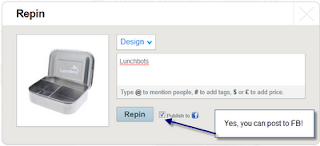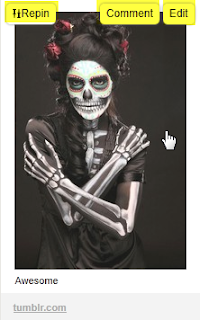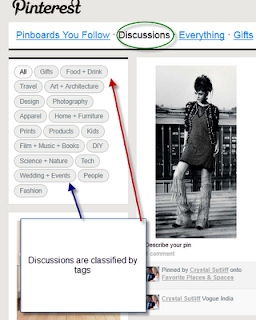Issues related to Information/Library Science, Culture, Politics, Communication, History, Whiteness, Equity, Diversity, Inclusion, CritLib, Philosophy, Analysis, Reviews
Saturday, February 28, 2015
Hackers Have a Stronger Sharing Ethic than Librarians
The dysfunctional model of Librarians, who already have great jobs as librarians--writing books for ALA, or other publishers who will then pimp their information out to libraries who can afford the price to these publications. Most often, these publications are on essential library best practices and technology implementations. To put up a barrier to this librarian created information is ethically and morally wrong. It goes against the librarian principle of sharing information.
This information should be made freely available to libraries who can't afford the new ALA techSource title, or to small rural libraries who can't afford to attend the 350.00 pre-conference.
Shit--I have learned more from Hackers for free than I have learned from librarians sharing their vital information.
This site needs to be hackerfied--meaning--it should be converted to an information sharing site:
When I was first introduced to computers and the internet I had a friend who was a hacker. He turned me onto a group of White Hat Hackers who dedicated their lives to sharing information.
Much of what they did was illegal, but it was not malicious. It was about sharing. These people would spend hours and hours creating tutorials for users--this is where I learned about ports, scanning, FTP and more--all for FREE.
This sharing ethic made such a huge impression on me that I wondered why more people don't share information so freely.
Then I became a librarian and was so excited by the purported ethic of sharing information with those who are in need. Once I became a librarian, I quickly realized that this was not the case. What I mean by that is that in order to serve your patrons well, then you will have to cough up the money (most often) to get that information in the form of a pre-conference, a publication or a trainer. BIG bucks paid to librarians, whose ethics are supposed to include sharing information--even with those who have nothing. There is something wrong when our profession sells information.
One of my academic friends on FB told me that it is a tenure issue--"...people need to publish in the antiquated system in order to be recognized professionally."
While, this is indeed the case for academic librarians, we ALL need to be pushing the envelope on the publishing platform issue. Blogs and other related platforms can and should be used by academia to publish their work and get critiques from colleagues and a wider breadth of readership than simply publishing your article in one journal. Blogging to a wider audience can inject a healthy dose of transparency, information diffusion and a diversity of ideas into Academia. Academia is in dire need of these things at the moment.
Librarians should set up a virtual publishing center and publish their work there. It should be Be freely available to anyone who needs the information and should also include multimedia production and storage capabilities.
I should note here that many library related publications that are written by librarians and sold by publishers do not pay a dime. However, the publishers make money if the book sells through library related channels.
Wednesday, August 24, 2011
Everyone is a Curator

I haven't been excited about anything on the Web in a long time. That has changed recently. My wife and a few other friends recently turned me onto Pinterest. Pinterest is like Flickr on steroids. It is a service/site where you can easily share images with people. Each image you pin or repin appears on your Pinterest wall, which is similar to a Facebook wall. The feed is live and comes in similar to how Twitter updates itself as you watch.
My Pinterest Wall

Users can follow other users’ feeds, and other users can follow your feeds. Images may be added from a website using the Pin It button, or you can upload images from your computer. The Pin It button can be placed onto your browser bar, thus allowing one to pin images by simply clicking on the button when viewing an image you like on any given website.

After a user clicks the Pin It button they are then presented with a window displaying the lined up images from the page they were on. Clicking the Pin It button on the images you want to “pin” to your Pinterest wall presents you with a screen where you may enter comments; add username info, tags, prices or other information to the pinned image.

Once the images are pinned, the user and his/her friends can see each other’s walls and pins. There is a repin button on each image that has been pinned; clicking on this button will repin the image to your wall. There is also a comment button allowing one to post comments on the image. Finally, there is a like button that enables you to like the pins and repins of the people you follow or other images on Pinterest.

In the comment area of the pin you can also:
“ Type @ to mention people, # to add tags, $ or £ to add prices.” Use hashtags #labels to organize your tags. Keep in mind that users can search using hashtags.
"To mention a pin to a Pinterest user, you first need to be following at least one board belonging to him/her. Then, type the @ symbol immediately followed by his/her username. Potential matches to this username will begin to load; when you see the person you want, click their name."
This is called a "mention". There is a link to your mentions page on your user profile page. This link will say @yourusername, allowing you to access your username "mentions".

My profile page also has my boards listed.
Pinterest users can organize their pins by creating “boards.” For instance, I have a “skate” board (no pun intended), where I pin skateboarding images. Users can follow individual boards or they can follow all of the boards a particular user “curates.” On Pinterest everyone is a curator.

You can shop for gifts on the gift page: http://pinterest.com/gifts/
Items are grouped according to price as circled below. I am not sure how to search using operators in Pinterest and am hoping a more robust search is developed in the near future.
You can also search other aspects on Pinterest. You can conduct hash tag searches. For instance, if I am interested in finding skateboarding photos, I would use #skateboarding as my search term, incidentally giving me a great return.

Tagged $49.99
Pinterest requires that an individual be invited to join their site.
"Pinterest is currently invite-only. You can request an invite from us or you can be invited by someone who is already a part of Pinterest."
Ask your friends who have accounts to invite you. You can also use the “Request an Invite” link on the Pinterest home page. Current users can follow the “invite friends” link to send invitations via email addresses, or by importing Yahoo or Gmail contacts into Pinterest. I have invited my Gmail contacts; it was quick and easy. Quick and easy seems to be one of the features I am always seeking, especially in a web application. It’s also intuitive (I hate to use that term, but it’s fitting).
Discussions
Users can follow discussions on various topics by following the “discussions” link.
This looks to be developing. I have not participated in many good discussions yet, but am open to following and participating in the future.

What I love about Pinterest is that it is so visual, that you can share a huge amount of images easily, and that you can go through others’ images quickly, liking and/or repinning them. I have encountered wonderful images: animal photos, images of food that look so delicious you want to reach into the screen, architectural photos, and more. I love that you can follow others’ collections easily and can encounter almost anything (and I mean that in the good taste sense).

I am quickly becoming addicted to my "Pin It" button and look forward to checking my wall daily. It is really fun. I enjoy meeting new people and seeing their images; I've not really found anything to not like about Pinterest.
Comments are greatly appreciated. I would love to hear about your ideas and experiences in Pinterest!
Monday, December 1, 2008
Organizational Communication Infrastructure for Innovation and Progress
Organizational Communication Infrastructure for Innovation and Progress
by Max Macias
11/08
At large organizations, Web 2.0 is being used in internal blogs or social networks. These perform the very useful functions of keeping far-flung employees, teams, and divisions in touch, sharing best practices and other useful information, and serving as a way to train. Organizations are beginning to see the value of these arrangements for more formalized training, as well as informal companywide communications (HR Focus, 2007).
One of the requirements for an efficient (profitable?) organization is effective communication. With the influx of information today, new forms of communication are required for organizations. Most contemporary associations I have encountered have late 20th century forms of communication based on an hierarchical system (I will be kind) from the 19th century. Today one communicates in a variety of ways based on new tools for communication that aggregate, relay, analyze and contribute to learning and understanding new information.
Efficient communication requires an infrastructure. Using new tools to facilitate a new direction in organizational communication infrastructures, organizations can increase their progress toward meeting their missions.
This post seeks to identify and show how some of these new tools can be incorporated into organizations in order to facilitate greater communication and efficiency at meeting the organizational mission. Most importantly, the creation of a new infrastructure requires support of the administration. Gaining the support of the management is the ‘Holy Grail’ of instituting change and requires exceptional leadership. This leadership will incorporate solutions to problems stated and build on the historical organizational structure. I seek to convince administrative readers (and others of course), that by building new efficient infrastructures for communication within the organizational structure, the organization will carry out the mission of the business more efficiently, creatively, and collaboratively. At the same time, building morale and creating a stronger, healthier organization.
In present day, we are literally flooded with information; instituting these kinds of communication enhancements will help filter and refine information in the organization, thereby taking it one step closer to knowledge. The ability to make information available via a message board, blog, or other form of interactive communication will facilitate commentary by people including experts in any given field who may never have contributed to the organization before. There are some that are shy; other individuals like to express themselves via writing, while others, perhaps socially inept, have much to contribute. Accessing, documenting, and instituting the information from these people can provide a rich resource of new and gainful knowledge valuable to the organization.
I am using the word efficient here to signify communication that can take advantage of all the members of an organization in a manner which enhances and facilitates the organizational mission. In the 21st century, it has already been shown that when communication channels are opened to members of an organization under the correct conditions, these formerly non-participating members can contribute by thinking and offering solutions and improvements to organizational processes.
By infrastructure, I mean creating the conditions for a free flow of communication. The existent channels of communication and the rates and directions of communication are what I am describing. Does the communication only flow from top down, or does it also run in the opposite direction? One of my axioms is that information must flow both ways in order for maximum organizational efficiency. In some senses this may seem threatening to some administrative readers. Admittedly, it is relinquishing a certain amount of control. However, the benefits of creating this infrastructure in the organization will outweigh this loss of control, and will free up time for other projects.
A strong example one can ponder is the analogy of old so-called Web 1.0 websites and the new 2.0 social sites. The 1.0 sites relied strictly on the website producer to generate content for the site. The new social aspect of sites allows interaction and contributions by all users, freeing the producer to pursue other creative avenues. This is an example of the kind of efficiency that can happen when social technology is executed correctly in an organization. Incidentally, the content is ALWAYS much richer and interesting when others are contributing.
There is nothing wrong with maintaining ListServs, but there is something wrong with maintaining them as your only official avenue of organizational communication. Lists are generally NOT interactive (enough); information gets buried in the mass of responses, and are easy to forget. It is really difficult to carry on a good discussion of an issue via email—for a variety of issues, including lack of etiquette and time, filtration, emails get buried—it does not take place in real time, etc...
These new avenues of communication—knowledge networks, if you will--can enhance knowledge management. This is a knowledge management issue/concept. In knowledge management, one goal is to understand who knows what and how to help them use this knowledge in accomplishing organizational missions. These new social tools may build upon and expand traditional KM methods beyond our wildest dreams. Again, this requires skill in administration—the skills of networking, making connections (between people, ideas, and concepts).
Some new tools follow:
Podcasting
Organizations can maintain audio archive of presentations, trainings, etc…these can then be made available to Staff for DL so they can listen while working or commuting. This kind of media archiving can serve as documentation as well as archives of the organization’s progress and work. It can then be accessed by supporters, or potential supporters of an organization, increasing the effectiveness of organizational networking within and without the organization.
Universities such as Berkeley, Oxford, and MIT are making lectures, notes, and documents available to the general public to facilitate the expansion of information channels and knowledge creation. The ability to make available information immediately accessible is incredible. I heard of these free pod casts via Twitter, RSS, and email. Again, they are creating new information networks, increasing dissemination and also diffusion of information which facilitates the establishment of new knowledge.
When I say infrastructure I am talking about using older methods such as email, lists, etc.--and newer models like dynamic message boards, chat, Wikis--using content management systems so users could begin to tell the story of the organization through their own experiences. This empowers staff and gives them a voice. This voice can comment and instruct management and others via these new methods of communication and interaction.
These tools also make the organization more transparent as employees have greater access to the knowledge base of the organization. This increased transparency will allow stronger procedures, reasoned decisions, and a living knowledge base that increases sometimes daily. Keeping things out in the open and making information about projects, advances, and organizational news will help prevent workflow redundancy and will promote networking between individuals with the same areas of interest.
Social Sensemaking
In their article, People Sensemaking with Social Networking Sites, Joan Morris DiMicco and David R. Millen show how an employee can glean information from IBM’s social networking site, Beehive. This site incorporates profiles of users. Another user can scan these profiles looking for people with similar interests who may want to collaborate, or just to enhance the knowledge management database of the user.
[The] premise of this workshop position paper is that social networking websites are used today for people sensemaking, both as the information source and as the tool for interpreting and synthesizing information on individuals. People sensemaking, the process a person goes through to gain a general understanding, or gist, of who someone is. For example, by understanding what someone’s role is within an organization, what they are working on, how approachable they are, and how knowledgeable they are on different topics, you can create a mental model of this person that informs how or when you will communicate or interact with that person (DiMicco, Millen, 2008).
Social Networking sites
As noted by Terrence K. Huwe in his article in Computers in Libraries UC,
for finals, 34% replied, "a few times a week"--even more impressive, 24% said several times per day--and that was in bSpace's first year of service (Huwe, 2008).
Facebook: This tool is being used by many organizations, including the Obama 2008 campaign as a way to let people, both within and without their organization, know what is going on. Serena Software Inc. is an organization that uses Facebook as their primary social networking tool.
So as not to appear to be Big Brother, Serena does not track individual use of Facebook. But Waldo [the HR person] gets a tally of total usage, and she calculates that employees use the site for an average of less than 10 minutes per week--not exactly a time drain (Roberts, 2008).
IBM is ahead of the game with their incorporation of Beehive into their organizational communication infrastructure. Their groundbreaking Center for Social Software puts them on the cutting edge of organizational communication. Their social visualization project, Many Eyes facilitates interaction, brainstorming, critical thinking and organizational communication. This is a quote from the Many Eyes website: “Many Eyes is a bet on the power of human visual intelligence to find patterns. Our goal is to "democratize" visualization and to enable a new social kind of data analysis.” IBM’s Visual Communication Lab puts it this way: “Visualization is traditionally viewed as an efficient way of transferring a large amount of information from a database into an individual's head. We believe that visualizations become even more powerful when multiple people access them for collaborative sensemaking.”
The Social Accessibility Project is a(n) (IBM) utility that enables volunteers to make Web pages accessible to the visually impaired. Using an innovative new system, it gathers information about accessibility problems directly from visually impaired users. To address these problems, The Social Accessibility Project provides a tool to members of the open community that allows them to externally modify Web pages, successfully making the pages accessible while leaving all original content untouched. Projects such as these seek to leverage collaborative processes to increase the speed of progress. This is exactly what all organizations seek to accomplish.
Many Eyes has incorporated message boards into their system that allow one to create visualizations of different subjects. This allows the creation of new information networks that didn’t exist before. Look at this visualization of a lesson plan by a member. Here the lesson plan has been changed into a sort of tag cloud of lesson plan words. This allows a visual learner to take advantage of this knowledge in a new, socially repackaged learning object. The other network that did not exist before was that of the Many Eyes project’s message board social visualization tool.
It is imperative that organizations incorporate, or facilitate the use of non-organizational social networks in their organization. Members will not wait for the organization to catch up—they will seek their own solutions via Facebook or other social platforms.
In our benchmark, we found that about 18 percent of enterprises were using blogs …and 23 percent had begun to deploy RSS as a way of managing information flows throughout the organization. These numbers are impressive for new technology, but they don't tell the whole story. When we dug deeper, we found adoption wasn't widespread throughout the organization; rather, in most cases individual workgroups were using these tools for both internal and external collaboration. In some cases, IT had little knowledge or control. Business units were taking it upon themselves to obtain the tools they needed to solve their communications and collaboration challenges, without waiting for IT to create a strategy (Lazar, 2007).
Irwin Lazar postulates some common obstacles to instituting Enterprise 2.0 in organizations (Lazar, 2007).
Fear
This can be fear of loss of control, fear of losing information to competitors, or fear of the new. Managers may be resistant to change, but also may be aware of workers’ resistance to change within their own departments. Tell people about the differences between the old 1.0 web concepts versus the 2.0 aspects which free up time for other investigations and pursuits.
Confusion
Just what is Web 2.0, social media, etc...? While some tools may be a good choice for some, others may not be. There is no cookie cutter approach to this and it takes talent, vision, communication, and leadership to be successful. The ability to see and relate one aspect to another in an organization will be an increasingly valuable skill. Hold a brownbag lunch, present at inservices, share your knowledge with the organization to educate.
Organizational Obstacles
The main organizational obstacle is resistance to change because of reliance on the old tried and true methods. These methods were sufficient in the days gone by, but today they just do not suffice. The amount of information today is staggering and organizations need tools to filter and make sense of this information. These tools can be presented as enhancements and many of them are fun to use and learn. Create a spirit of fun and learning in your organization.
Reliance on longtime vendors
In many cases IT departments are happy to maintain institutional communication networks just as they are. This requires little work, and can lead to reliance on longtime vendors. Again, this may have been adequate in the past, but today people need new tools that are not being offered by these same vendors.
Conclusion
The surge of information and the speed of change require organizations to develop new forms of communication infrastructures which allow collaboration, information relay, and criticisms. These infrastructures can be created using both internal and external tools to the organization. Again, there is no cookie cutter solution, but creating a team of technologically skilled people who are familiar with the organization can facilitate the implementation of social technologies to your organization. By introducing these technologies piecemeal, and in ways that make them fun, management and administration can go a long way toward implementing effective use of these new tools. Today we can leverage information via efficient communication in ways we never imagined. Please take a moment to consider how you might incorporate social technologies in your organization to accomplish your organizational mission.
References
(2008, April). What You Should Know About Using Web 2.0. HR Focus, 85 (4), 10-11.
DiMicco, J, & Millen, D (2008). People Sensemaking with Social Networking Sites. Position paper presented at the Sensemaking Workshop.
Huwe, T. (2008, September). Smart Mob Makeover. Computers in Libraries, 28(8), 24-27.
Lazar, I (2007, August). Creating
Roberts, B (2008, March). Social Networking at the Office. HR Magazine, 53 (3), 81-83.
-
Twitter for Organizations Right now you're probably thinking, "Oh, no, not ANOTHER Twitter® tutorial!" Well, yes, this IS ...
-
Librarians with Spines can be a useful classroom teaching tool for LIS. It is unique and has a broad range of topics from a diverse group...
-
Whiteness in US Libraries [Note--this is a blog post. These ideas can and will be further developed. These ideas are sketches of what ...







